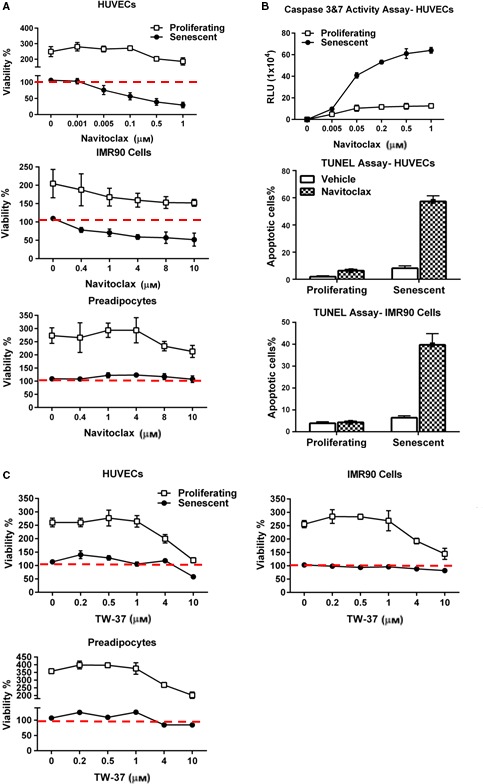Figure 2.

N targets senescent cells. (A) N is more effective in reducing viability (ATPLite) of senescent HUVECs and IMR90 cells than human preadipocytes. Proliferating or senescent cells were exposed to different concentrations of N for 3 days. The red line denotes plating densities at day 0 of senescent and nonsenescent cells, both set to 100%. HUVEC and IMR90 data represent means ± SEM of four replicates at each drug concentration. Preadipocyte data are means ± SEM of four different subjects; P < 0.001, ANOVA. (B) N induces apoptosis in senescent HUVECs and IMR90 cells. HUVECs were treated with N for 12 h, and then caspases 3 and 7 were assayed using a luminescent substrate. N (1000 nM) induced apoptosis in senescent cells by TUNEL assay; P < 0.001, t‐test. (C) The Bcl‐2/Bcl‐xl inhibitor, TW‐37, does not impact the viability of senescent HUVECs, IMR90 cells, or human preadipocytes. Cells were exposed to different concentrations of TW‐37 for 3 days. The red line denotes plating densities on day 0 of senescent (set to 100%) and nonsenescent cells (also set to 100%). HUVEC and IMR90 cell data are means ± SEM of four replicates at each concentration. Preadipocyte data are means ± SEM of four different subjects.
